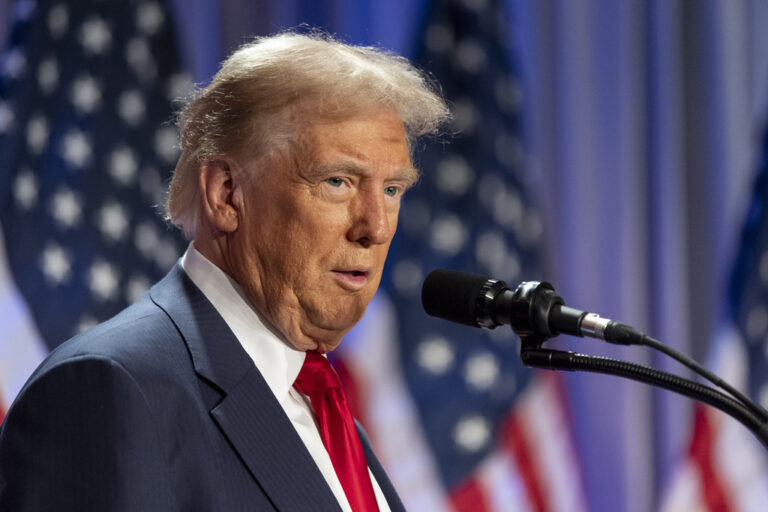 There’s been controversy swirling around the Pentagon’s newest bomber program ever since last year, when the Air Force awarded the contract for what’s considered to be the most important national security procurement project over the next decade.
There’s been controversy swirling around the Pentagon’s newest bomber program ever since last year, when the Air Force awarded the contract for what’s considered to be the most important national security procurement project over the next decade.
First, the losers, a team made up of defense giants Boeing and Lockheed Martin, filed a legal challenge, saying the Air Force’s selection of Northrop Grumman “was fundamentally flawed.” Northrop successfully fended off that protest, but now it faces more challenges, this time on Capitol Hill, where a backroom fight for funds and arguments over the largely classified bomber’s secrecy have begun.
Earlier this month, Sen. John McCain, R-Ariz., the powerful chairman of the Armed Services Committee, led an effort that would have forced the Air Force to reveal the total cost of the program-which one analyst estimated could reach $100 billion. But in a closed-door session, a band of senators blocked the move, arguing that revealing the figure would also divulge the bomber’s capabilities and allow potential enemies to defend against it.
An attempt to institute a “cost threshold” on the program and impose other restrictions in the Senate version of the Pentagon spending bill also met with resistance. On Monday, another group of senators dashed off a letter to McCain and the leaders of the Senate and House Armed Services Committees, insisting such measures “could cause delays and induce greater risk in development and procurement phases of the program,” the senators wrote.
The letter, obtained by The Post, also decried attempts to cut the authorization for the program by $300 million. “A reduction of this magnitude at the start of the development phase of the program threatens to put the program off-track at its onset, increasing the risk for delay and cost overrun in the future,” the letter said. It was signed by a bipartisan group of 22 senators, many of whom represent states with close ties to Northrop and the development of the bomber.
Northrop is working on building 100 of the so-called B-21 bombers, designed to penetrate deep into enemy territory and capable of carrying nuclear weapons. The fleet is slated to enter service in the 2020s and would eventually replace the aging B-52s and the B-1.
Northrop, one of the country’s largest defense contractors, has a long history in the field, having built the stealthy B-2 bomber, the slim and angular shaped plane known for its ability to avoid radar detection.
Since the company won the contract to build the Pentagon’s stealthy and highly classified bomber, some details about the project have begun to seep out. But one significant detail has remained under wraps: what it will end up costing.
Air Force officials have maintained that revealing the projects total price tag would also allow enemies to glean details about it, such as how far it can fly and how many bombs it can carry.
To which McCain had this to say: “Nonsense.”
The Air Force has already revealed the so-called average “unit cost” of each B-21 bomber in 2015 dollars: $606 million. It has also disclosed the development cost: $23 billion. But it has not said what the total costs would add up to over the life of the program with inflation added.
The Air Force has also released an artist rendering of what the plane would look like and announced some of the suppliers that would build several of the bomber’s major components, including the engine.
“In other words, the Air Force has already told our enemies what each plane costs, what it looks like and who is making its most important components,” McCain wrote in an op-ed posted on the blog “War Is Boring.” “All of this would seem to be more useful information for a foreign intelligence agency than the overall contract value.”
McCain said he asked for the overall budget estimates because he was concerned about contractors who undercut the competition by submitting an exceptionally low bids via “cost-plus” contracts that allow them to be reimbursed for expenses.
“When a contractor can’t meet the promises of its lowball bid, costs grow and taxpayers get left with the bill,” he wrote. “That is why public disclosure of the contract award value is so important.”
A spokesman for Northrop declined to comment.
Todd Harrison, a defense analyst at the Center for Strategic and International Studies, said that adversaries could, in fact, glean insights into the program by knowing the cost. But that argument is problematic, he said, since the Pentagon has already revealed so much about the cost already.
“It baffles me,” he said. “They may be politically naïve and think they don’t have to tell Congress or the public. It’s going to create a headache for them every year because folks like John McCain are going to continue to demand the total cost.”
Based on the unit cost and the development figures, Harrison estimates that the total cost is about $100 billion. Such a number, he said, could give members of Congress “sticker shock.” But he said that it is better to “get the ugly number out there. You get it out of the way. It’s like pulling a Band Aid off. You just yank it off.”
(c) 2016, The Washington Post · Christian Davenport











